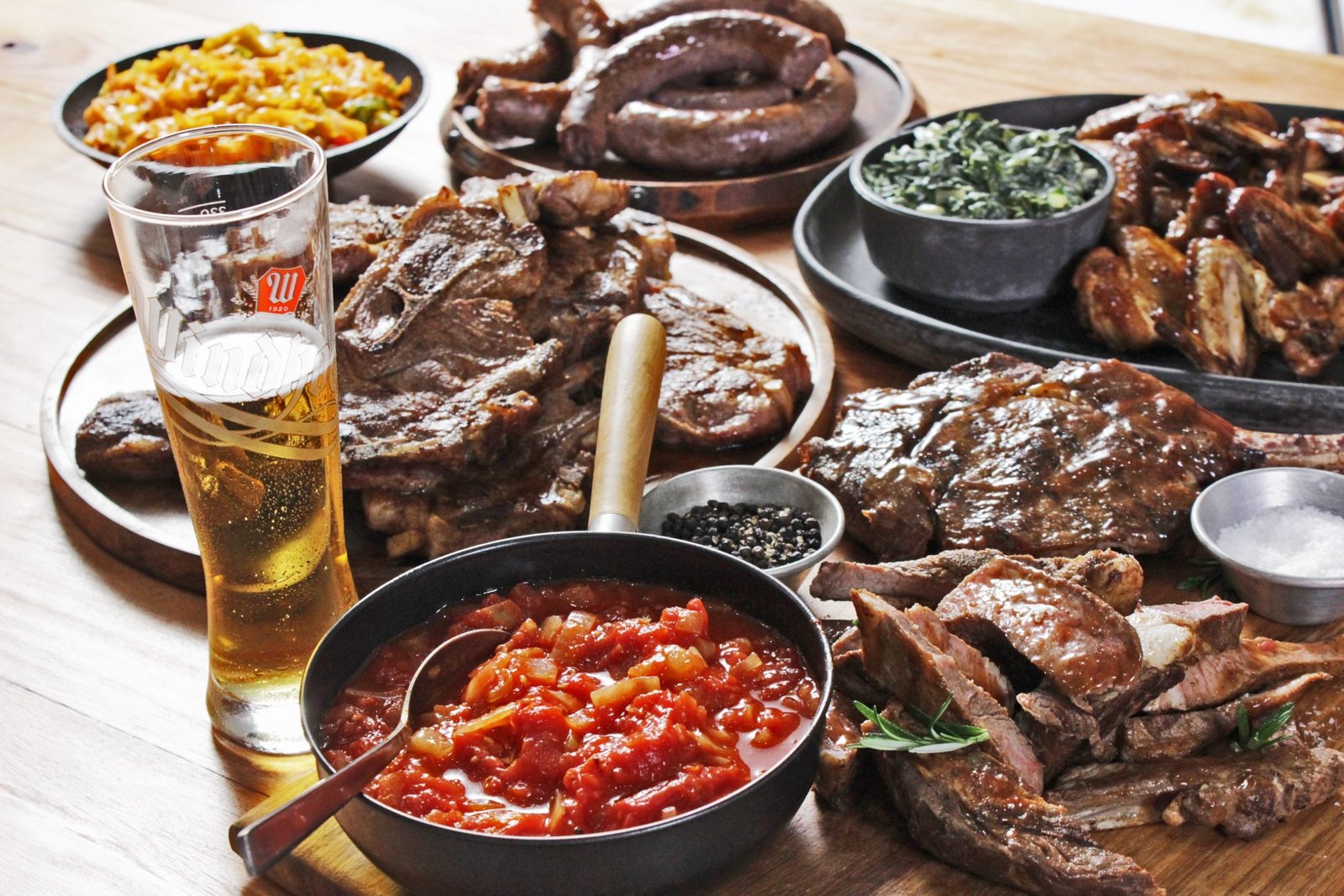Take Me to The Recipes
Imagine a landlocked Eden, nestled in southern Africa, where generations stitch their culinary heritage into the very fabric of the nation. This is Zimbabwe, a tapestry of landscapes – from soaring mountains and lush forests to the arid whisper of the Kalahari and Zimbabwean Cuisine matches the magnificence of the country!
Although once called the “breadbasket of Africa,” Zimbabwe boasts more than just bounty. Its 15 million people, belonging to diverse groups like the Shona and Ndebele, contribute their unique flavors and traditions to a vibrant food scene.
Beyond its stunning natural beauty and rich mineral deposits, Zimbabwe’s true treasure might just be its cuisine. Join us on a culinary adventure, where every bite whispers stories of history, resilience, and the deep connection between people and the land.
Take Me to The Recipes
Key Takeaways
- Rich Heritage: Zimbabwean cuisine is deeply rooted in the nation’s history, traditions, and diverse cultures, offering a genuine taste of its heritage.
- Staple Delight: ‘Sadza,’ a maize meal porridge, is the cornerstone of many Zimbabwean meals, showcasing the significance of maize in the country’s diet.
- Flavor Palette: While some dishes have a spicy kick, Zimbabwean cuisine boasts a balanced mix of savory, sweet, and occasionally spicy dishes, appealing to a broad range of palates.
- Vegetarian and Vegan Options: Dishes like Muboora and Dovi highlight the cuisine’s versatility, offering sumptuous vegetarian and vegan choices.
- Sweet Notes: Zimbabwe offers unique desserts like Mazhanje and Mapopo Candy, capturing the country’s fruity and sweet traditions.
- Traditional Beverages: Drinks like Chibuku and Mahewu, made from fermented grains, are deeply interwoven into the Zimbabwean culinary narrative.
- Eating Etiquette: Traditional customs, such as eating sadza with the right hand, highlight the importance of etiquette and communal dining.
- Influences and Evolution: Zimbabwe’s food has been shaped by indigenous tribes, neighboring countries, and modern global influences, creating a dynamic and evolving culinary landscape.
Where is Zimbabwe?

Zimbabwe is a landlocked country located on the African continent, precisely in the southern part of the African continent.

Index to the Contents
- Take Me to The Recipes
- More Articles
- Interesting Facts About Zimbabwe
- Zimbabwe’s History and the Affect it Has Had on the Cuisine
- How the Zimbabwean Climate and Geography has Influenced the Cuisine
- Understanding the Essence of Zimbabwean Cuisine
- How Healthy is Zimbabwean Cuisine?
- Zimbabwean Culinary Traditions
- What is Zimbabwe’s National Food?
- Traditional Zimbabwean Dishes
- Popular Food in Zimbabwe
- Zimbabwe Recipes You Can Try at Home
- Conclusion
- Frequently Asked Questions
More Articles you may be Interested in
- North and South American Cuisine – A Culinary Expedition
- Europe Cuisine: Savor the Continent’s Best Culinary Secrets!
- African Cuisine: Discover the Bold Flavors & Global Charm!
- Asian Cuisine Unlock its Secrets – Taste, Health & Global Influence!
Savor iconic Zimbabwean Recipes – Click on each tantalizing Image to open up the Recipe

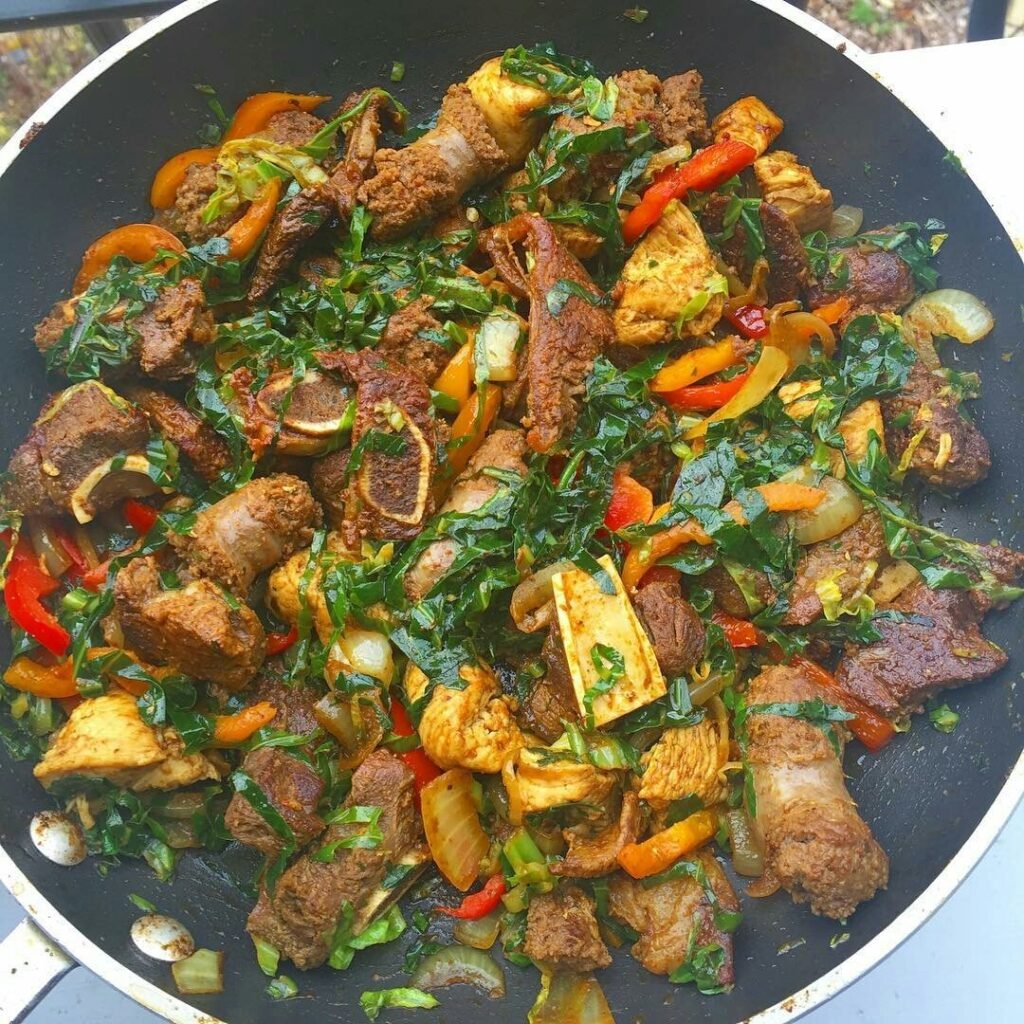
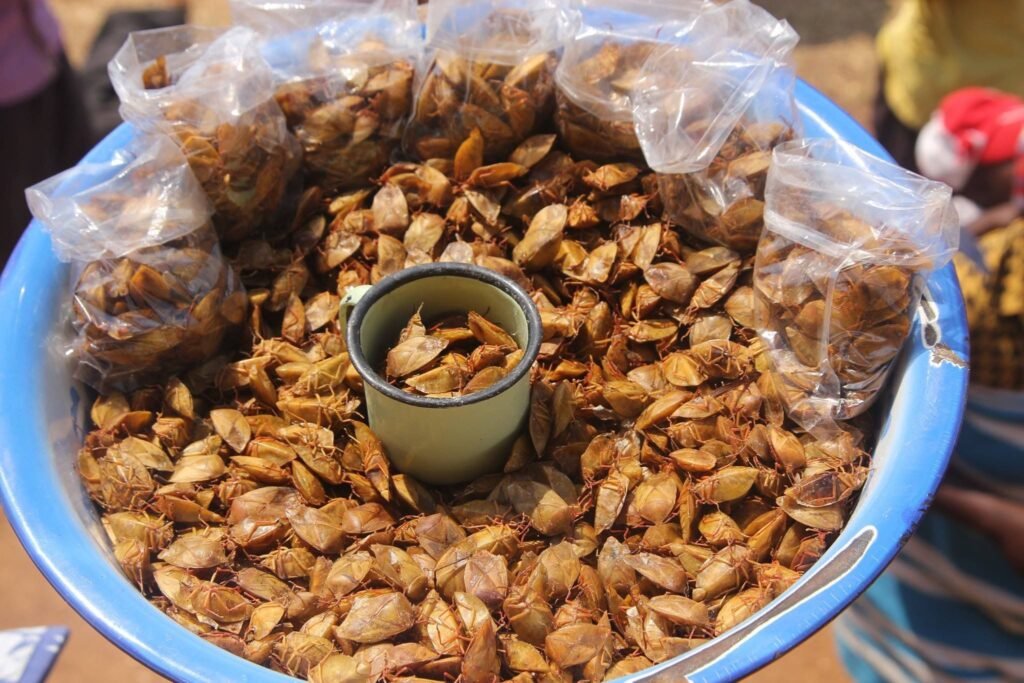

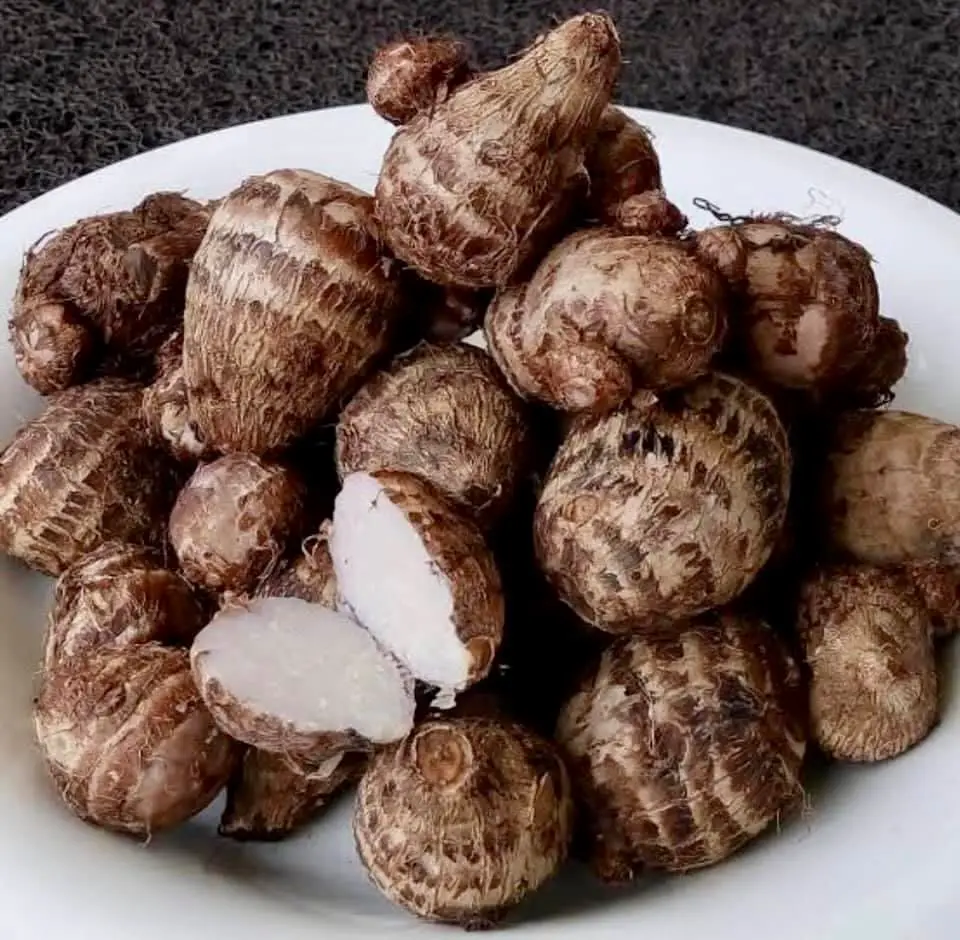

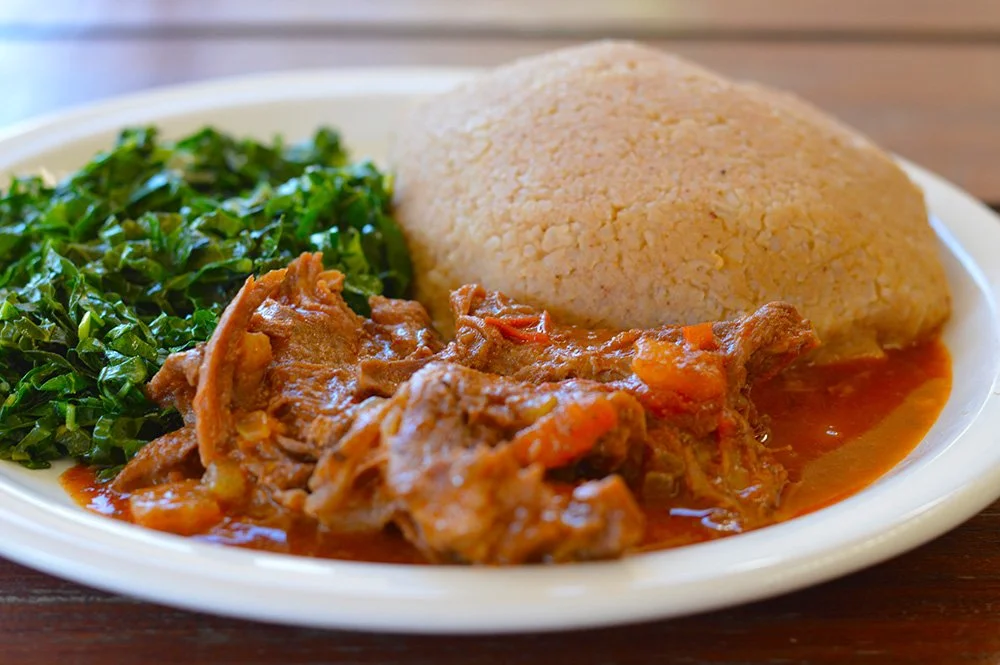
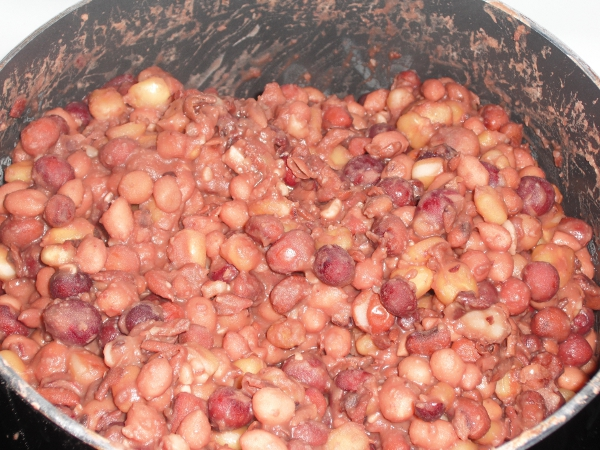
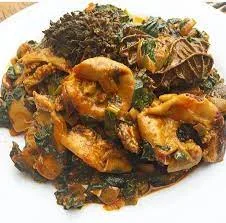
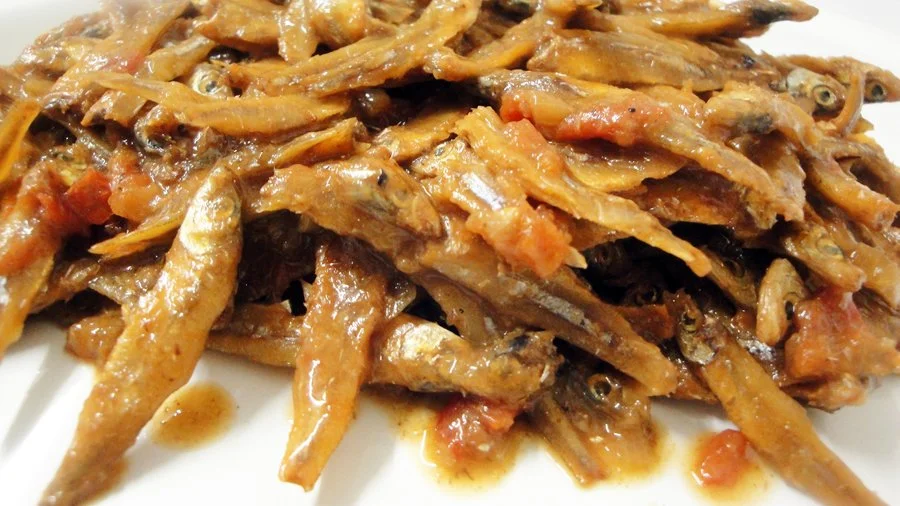

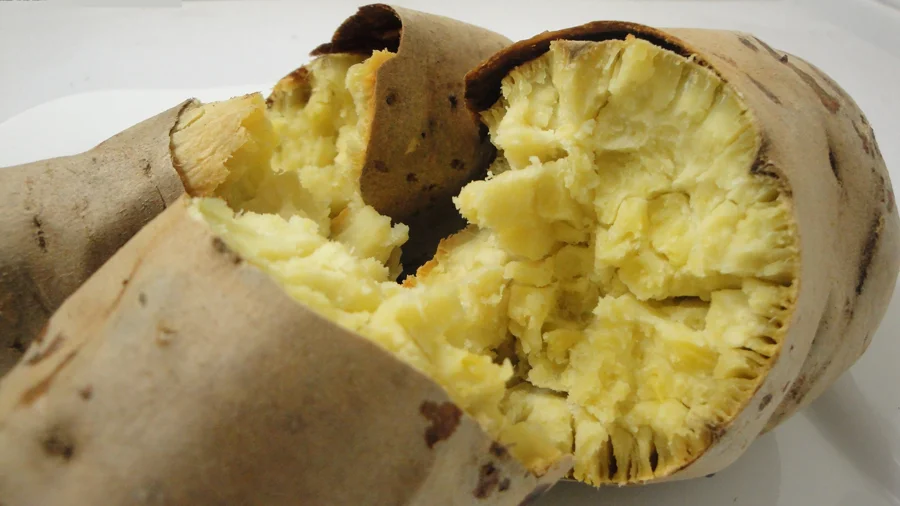
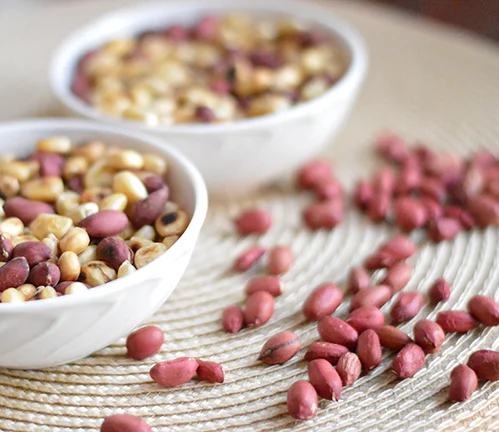
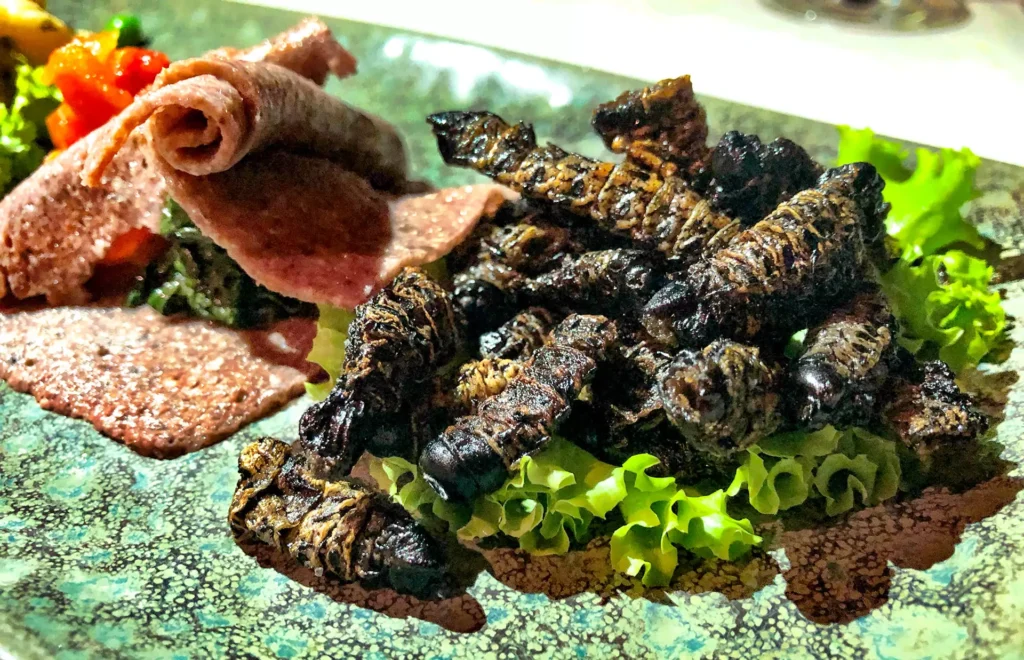

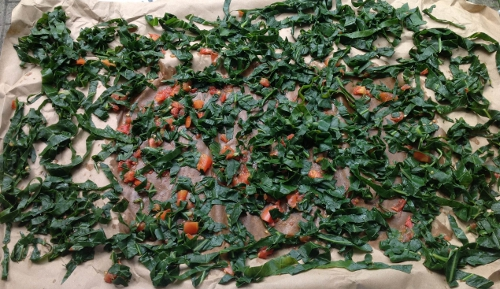
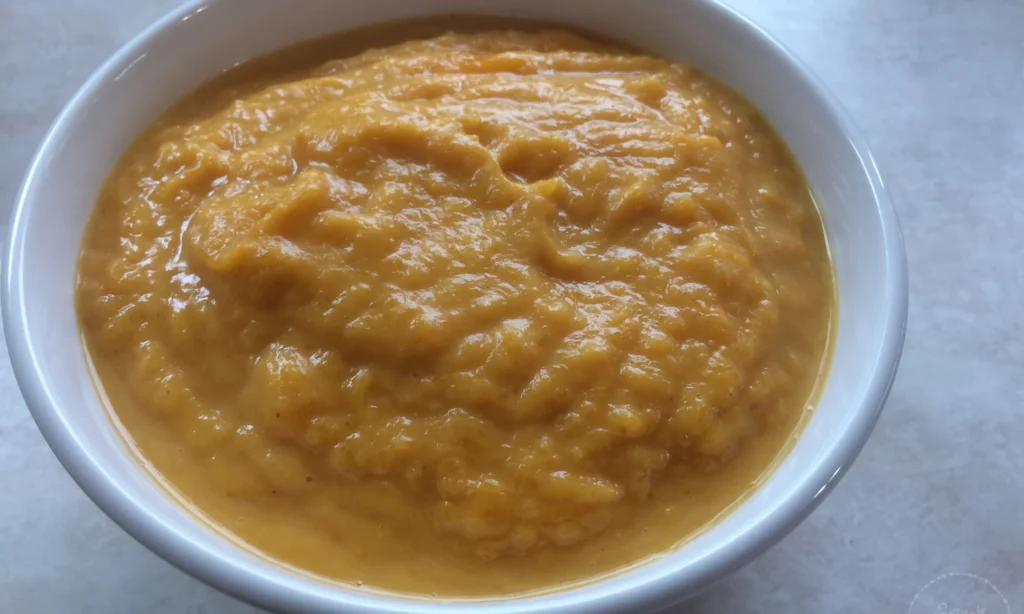
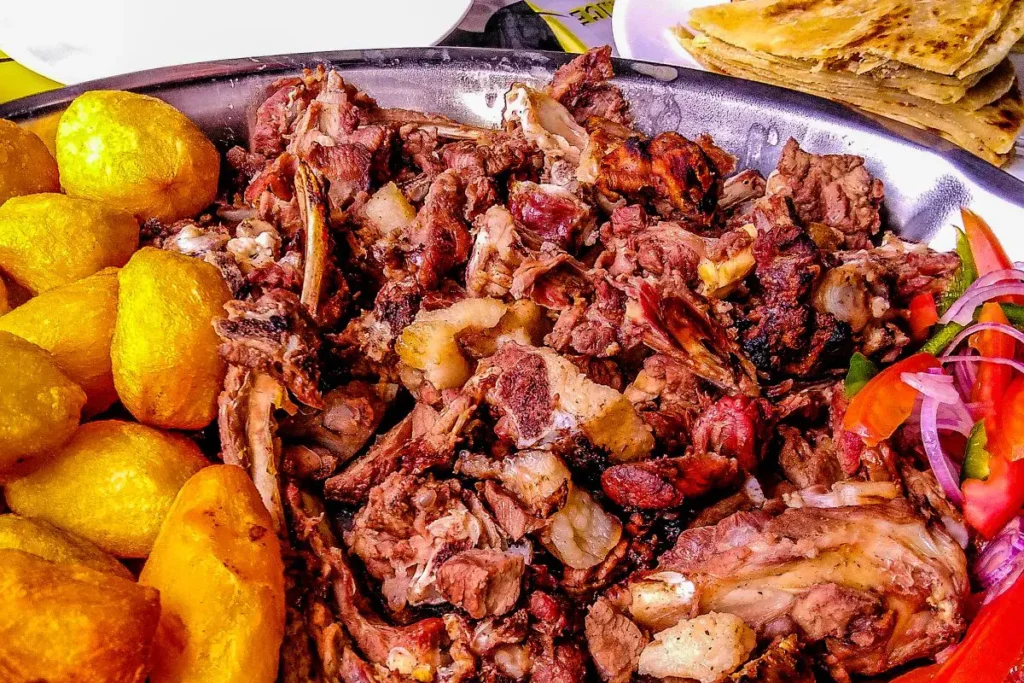



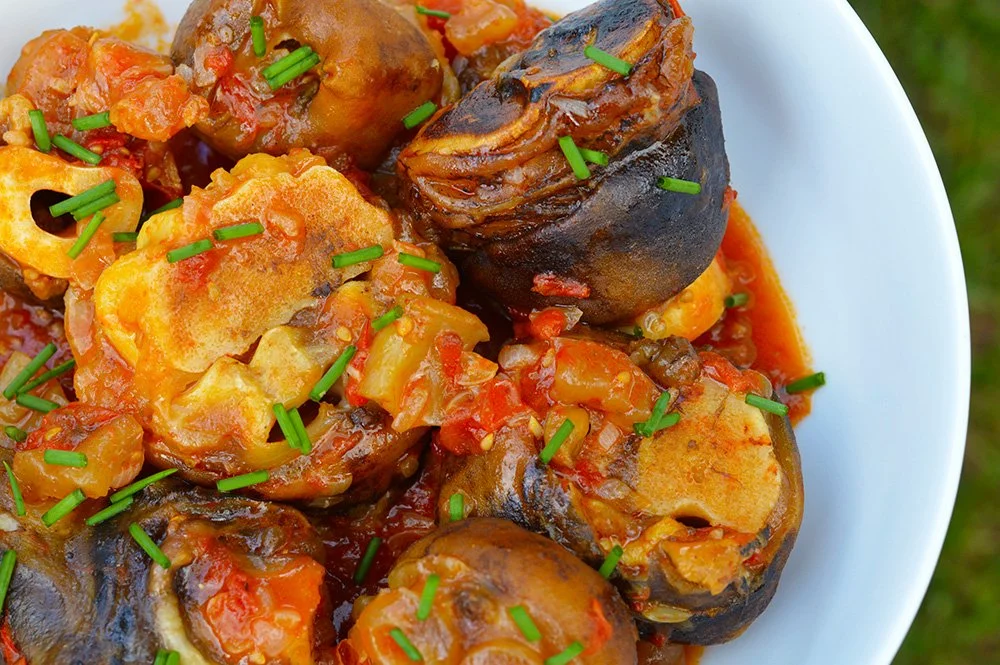
10 Intriguing Bites of Zimbabwe: Facts Beyond the Ordinary
Goblin Trouble
Don’t underestimate the power of a good story! In Zimbabwe, police stations have been known to empty at the mere mention of a “goblin” sighting.
While some describe these creatures as dog-like with scales, the real threat might be the underlying belief system and its impact on communities.
World’s Biggest Man-Made Lake (by Volume)

Take a dip (or a boat ride) in Lake Kariba, a staggering 226km long and boasting enough water to fill four Grand Canyons! This hydroelectric marvel provides power to both Zimbabwe and Zambia.
Waterfalls of Wonder

Witness the roar of Victoria Falls, one of the Seven Natural Wonders of the World. With a width of 1,708 meters and a dizzying 108-meter drop, it creates a mystical “smoke that thunders” as locals call it.
Most Official Languages (Guinness World Record)

Multilingualism takes on a whole new meaning with Zimbabwe’s 16 official languages, reflecting its diverse cultural tapestry. Imagine ordering your “sadza” (maize porridge) in both Shona and Ndebele!
A Feast for the Eyes (and Stomachs)

The “Binga Basket” tradition goes beyond its name. This intricate woven basket serves as a portable feast, filled with an assortment of dishes like stews, vegetables, and fruits, perfect for enjoying a communal picnic.
Goldilocks Goes Wild

Zimbabwe boasts the rare black rhinoceros, the smallest of the five rhino species. While critically endangered, conservation efforts are providing a glimmer of hope for these unique creatures.
Diamonds in the Rough

Move over, De Beers! Zimbabwe has a long history of diamond mining, with the Murowa mine currently being one of the largest diamond producers in the world.
The Baobab Whisperer

These ancient, majestic trees, some estimated to be over 2,000 years old, are considered sacred by some Zimbabwean communities. Legend has it that they hold the spirits of ancestors, while their fruits provide valuable nutrients.
Teatime with a Twist

Forget crumpets, Zimbabweans enjoy their afternoon tea with “masala chai,” a spicy, milky concoction brought by Indian immigrants. It’s a delightful fusion of tradition and influence.
From Bust to Boom (Hopefully)

While facing economic challenges, Zimbabwe’s entrepreneurial spirit shines through. Street vendors showcase their culinary skills, crafting everything from “sadza” variations to flame-grilled meats, offering affordable and delicious options.
These are just a few bites of the fascinating stories and flavors that Zimbabwe has to offer. So, go beyond the headlines and discover the vibrant culture, resilience, and deliciousness that awaits!
A Culinary Journey Through Time: Zimbabwean Cuisine
Zimbabwe’s cuisine, like its rich history, reflects a tapestry woven from diverse influences. Each period has left its mark, shaping the flavors and ingredients enjoyed today.
Pre-Colonial Era (Before 1890)
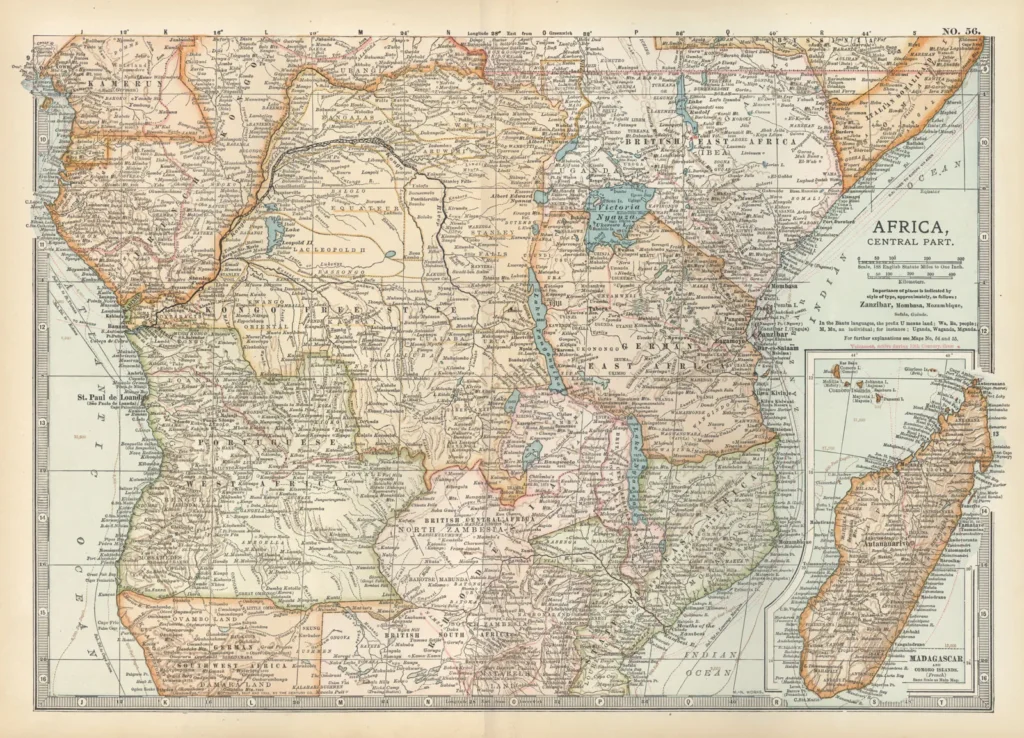
Subsistence farming defined this period, with millet, sorghum, and indigenous vegetables like mhunga and nhetema forming the base. Meat consumption was limited, reserved for special occasions.
Cooking revolved around open fires, utilizing clay pots and traditional techniques like smoking and drying.
Colonial Period (Rhodesia 1890-1980)

British colonization introduced maize (sadza), becoming the dominant starch. European spices and vegetables like cabbage and carrots found their way in. Tea culture flourished, while beef became more accessible, influencing stews and roasts.
However, this period also saw cash crop production for export, displacing some traditional crops and leading to dependence on imported foodstuffs.
Post-Independence (1980-Present)

With independence, efforts focused on self-sufficiency, reviving traditional crops and incorporating them into modern dishes. Peanut butter (dovi), a legacy of Portuguese influence, gained popularity due to its affordability and protein content.
Street food culture emerged, offering affordable and diverse options like roasted maize (maputi) and fried dough (zvipo). However, economic challenges often restrict access to diverse ingredients, making improvisation and resourcefulness key aspects of Zimbabwean cooking today.
Modern Influences
Globalization has brought an influx of international cuisines, evident in the rise of pizza restaurants and Chinese takeaways. While some fear this homogenization, others see it as an opportunity for fusion and innovation.
Younger generations are experimenting with traditional recipes, adding modern twists and utilizing readily available ingredients.
Looking Ahead
Zimbabwean cuisine continues to evolve, reflecting the nation’s resilience and adaptability. Its future lies in striking a balance between preserving its heritage and embracing new influences, ensuring a vibrant and delicious culinary identity for generations to come.
References
Web Sites
- https://togetherwomenrise.org/search-recipes/
- https://www.seedandknowledge.org/wp-content/uploads/2022/05/Harare-Good-Food-Festival-2021-Publication-Eat-More-Plants.pdf
- http://www.foodbycountry.com/
Books
- “Food in Zimbabwe: A Journey of Discovery” by Bea
- Academic Articles:
- “The Impact of Colonialism on Traditional Food Systems in Zimbabwe” by Chipo Shamuya
- trice Ntandoyenko
- “Zimbabwe: A Short History” by Terence Ranger
- “The Cambridge History of Africa: Volume 8” edited by Richard Gray and John Iliffe
Academic Articles:
- Learning from past and current food security efforts and challenges in Zimbabwe: The years 1430–2020
- Zimbabwe Food Systems Profile
Zimbabwe’s Delicious Blend: Food Shaped by Land and People
Zimbabwe’s rich tapestry of flavors owes much to its unique climate, geography, and cultural diversity. Let’s explore how each element adds its own spice:
Landlocked and Lush

Nestled in southern Africa, Zimbabwe boasts a tropical climate with distinct wet and dry seasons. Rainfall varies across its diverse landscape, with eastern highlands receiving the most and the lowveld experiencing less. This impacts what thrives where.
Maize thrives in the cooler highveld, becoming the star ingredient in sadza, a hearty porridge enjoyed with various relishes. In the warmer and drier lowveld, sorghum and millet take center stage, forming the base for pap, a thinner porridge.
Sun and dryness necessitate special preservation techniques. Drying, salting, and smoking ensure meat and fish stay safe and delicious. Spices, herbs, and lemon juice add flavor and further protect against spoilage.
Nature’s Bounty
From towering mountains to vibrant forests, Zimbabwe’s varied geography offers a treasure trove of ingredients.
Mopane forests in the Matabeleland region are home to the prized mopane worm. This protein-rich caterpillar is boiled, dried, or fried, becoming a favorite snack or enjoyed with sadza.
The mighty Zambezi River and Lake Kariba brim with fish like bream, kapenta, and tigerfish, providing a bounty for grilling, frying, or stewing in flavorful concoctions.
The eastern highlands burst with fruits like bananas, oranges, and avocados, enjoyed fresh or transformed into refreshing juices, jams, and sweet treats.
A Melting Pot of Flavors


Zimbabwe’s vibrant cultural tapestry, woven from diverse ethnicities and external influences, further enriches its cuisine.
The Shona majority, mainly in the north and east, are known for dishes like sadza, okra stew, pumpkin leaves, peanut butter stew, and beef stew.
The Ndebele, residing in the south and west, have their own culinary delights: thick porridge, sour milk, mixed greens, and cow head stew.
Other communities like the Tonga, Shangaan, Venda, and Kalanga contribute their unique specialties and preferences.
Traces of colonization, migration, and trade have also left their mark. Dishes like tea, bread, pies, curries, rice, samosas, and chow mein reflect influences from Britain, India, Portugal, and China, adding to the fascinating mix.
From landlocked plains to diverse ecosystems and a multicultural society, Zimbabwe’s unique identity shines through in its delicious and ever-evolving cuisine.
References
A Taste of Zimbabwe: Where Land, History, and Spirit Blend on a Plate
Traditional Zimbabwean food is a vibrant tapestry of flavors and techniques, mirroring the country’s diverse landscape, rich history, and the enduring spirit of its people. It’s not just about sustenance; it’s about community, connection, and celebrating the land’s bounty.

Sadza: The Heart of the Dish
Take “sadza,” the versatile maize porridge that graces nearly every meal. Served with veggie relishes, meat stews, or pickled fish, it’s the comforting constant, symbolizing the nation’s agricultural roots.
Preparing it often becomes a communal affair, reflecting the essence of Zimbabwean gatherings: unity and celebration.
Beyond Sadza: A Culinary Journey
But the culinary journey doesn’t stop there. The “nyama” tradition, revolving around slow-cooked or open-fire roasted meat, showcases the importance of livestock in Zimbabwean culture. From succulent goat to tender beef or exotic game meat, each dish tells a story of the country’s pastoral heritage.
Vegetables, often cooked with peanut sauces or cowpea leaves, highlight the agricultural diversity and the resourceful use of simple ingredients. The “dovi” stew, a rich blend of meat and peanut sauce, is a perfect example of how local flavors create a harmonious dance on the palate.
Traces of the World
Trade and migration have added their own spices to the pot. The fiery peri-peri from Mozambique and the aromatic influences of Indian immigrants are woven into the culinary fabric.
More Than Just Food
The true essence of Zimbabwean cuisine transcends ingredients and methods. It lies in the spirit of togetherness. Meals are about sharing stories, celebrating triumphs, and finding solace in difficult times.
To understand Zimbabwean food is to understand its heart, a heart that beats with resilience, community, and a deep love for the land and its offerings.
How Healthy is Zimbabwean Cuisine?
Zimbabwean cuisine can be healthy or unhealthy depending on the ingredients, cooking methods, and portion sizes. Here are some points to consider:
Zimbabwean cuisine is rich in whole grains
Zimbabwean cuisine is rich in whole grains, such as maize, sorghum, and millet, which are high in fiber, vitamins, and minerals. These grains can help lower blood sugar, cholesterol, and blood pressure, as well as prevent constipation and colon cancer.
However, eating too much of these grains can also lead to weight gain, especially if they are cooked with a lot of oil, butter, or sugar. A healthy serving size of sadza, pap, or porridge is about one cup or the size of your fist.
Zimbabwean cuisine includes a variety of lean proteins
Zimbabwean cuisine also includes a variety of lean proteins, such as chicken, fish, and beans, which are essential for muscle growth, repair, and immunity. These proteins can help you feel full and satisfied, as well as reduce the risk of heart disease, diabetes, and some cancers.
However, some protein sources, such as red meat, processed meat, and eggs, can be high in saturated fat, cholesterol, and sodium, which can increase the risk of these diseases. A healthy serving size of meat, fish, or eggs is about three ounces or the size of your palm,
A healthy serving size of beans or lentils is about half a cup or the size of your cupped hand.
The Cuisine uses lots of Healthy Vegetables
Zimbabwean cuisine also features a lot of vegetables, such as okra, pumpkin leaves, and greens, which are low in calories and high in antioxidants, vitamins, and minerals. These vegetables can help protect against oxidative stress, inflammation, and chronic diseases, as well as improve digestion and skin health.
However, some vegetables, such as potatoes, cassava, and yams, can be high in starch and calories, which can contribute to weight gain if eaten in excess. A healthy serving size of starchy vegetables is about half a cup or the size of your cupped hand.
A healthy serving size of non-starchy vegetables is about one cup or the size of your fist.
The Cuisine Uses Lots of Spices
Zimbabwean cuisine also uses a lot of spices, such as turmeric, ginger, and cayenne pepper, which can add flavor and health benefits to the food. These spices can help boost metabolism, fight infections, and reduce inflammation, as well as lower blood sugar, cholesterol, and blood pressure.
However, some spices, such as salt, can be harmful if consumed in excess, as they can raise blood pressure, cause fluid retention, and damage the kidneys. A healthy amount of salt is about one teaspoon or less per day.
Desserts and Snacks
Zimbabwean cuisine also has some desserts and snacks, such as mapopo, biscuits, and mopane worms, which can provide some energy, sweetness, and protein.
These foods can be enjoyed occasionally as a treat, but they should not be eaten regularly or in large amounts, as they can be high in sugar, fat, and calories, which can lead to weight gain, tooth decay, and diabetes. A healthy serving size of dessert or snack is about one piece or the size of your thumb.
References
A Culinary Journey Through Zimbabwe: Land, Tradition, and Flavor
Imagine the fiery glow of a sunset over the Zambezi, painting the Zimbabwean landscape in vibrant hues. This land, steeped in ancient traditions, offers a feast for the senses just as captivating. Dive into its culinary heritage, where generations-old practices tell stories of community, resilience, and a deep respect for the land.
Sadza: The Communal Heartbeat
At the heart of Zimbabwean cuisine lies “sadza,” a humble maize-meal porridge that transcends its simplicity. It’s not just a dish; it’s a gathering, families huddled around a steaming pot, molding portions with practiced hands and sharing laughter with every savory dip.
This shared experience embodies the core of Zimbabwean food: community and connection.
Braai: Smoke, Laughter, and Storytelling
The aroma of sizzling meat wafts through the air, announcing another cherished tradition – the “braai.” Picture open flames grilling an array of meats, the smoky scent carrying invitations to celebrations, family lunches, or simply an excuse for friends to gather.
Meals become storytelling sessions, filled with laughter and traditional music, etching memories with every delicious bite.
Buma: Honoring the Land and the Feast

Venture into rural villages and witness the “buma” tradition. During special occasions, families come together to respectfully slaughter a goat or cow, using every part with utmost care.
It’s a testament to their deep respect for the sacrifice and a demonstration of their resourceful spirit, minimizing waste while maximizing flavor.
Beyond the Ordinary: Delicacies with a Twist
Special occasions call for unique offerings. Be surprised by “mazondo” (cow hooves) or “maguru” (tripe), delicacies patiently slow-cooked to melt-in-your-mouth tenderness.
These dishes represent Zimbabwe’s “nose-to-tail” philosophy, emphasizing respect for the animal and showcasing culinary ingenuity.
Cheers to Tradition: The Power of Umqombothi
No culinary journey is complete without beverages. Witness the brewing of “umqombothi,” a traditional beer made from fermented maize and sorghum.
This communal act strengthens bonds and signifies celebrations or ancestral rituals, reminding us that food transcends sustenance; it nourishes the soul and connects generations.
More Than Just a Meal: A Window to the Soul
Sharing a Zimbabwean meal is akin to stepping into a time machine. These traditions have weathered colonial eras, social upheavals, and economic challenges, emerging stronger than ever.
They are a testament to the enduring spirit of the people and the irreplaceable role food plays in their cultural narrative.
What is Zimbabwe’s National Food?

Zimbabwe’s national food is sadza, also known as nshima or pap in other African countries. Sadza is a staple dish in Zimbabwe and many other parts of Southern Africa. It is a type of porridge or stiff dough made from ground maize (corn) and water.
The preparation involves boiling water and gradually adding maize meal while stirring continuously to achieve a smooth, thick consistency.
Sadza is typically served as an accompaniment to various dishes, such as meats, vegetables, or sauces. It serves as the foundation of many meals and is often enjoyed with side dishes like vegetables, meats (such as beef, chicken, or fish), and relishes.
The versatility of sadza makes it a central element of Zimbabwean cuisine, reflecting the importance of maize in the region’s agricultural practices.
The cultural significance of sadza goes beyond its nutritional value; it is a symbol of communal dining and togetherness. Sharing a meal of sadza is a social activity that fosters connections within families and communities.
While sadza is the national food, Zimbabwean cuisine is diverse, incorporating various flavors and culinary traditions from different ethnic groups and historical influences.
Traditional Zimbabwean Dishes

The Zimbabwean menu boasts an array of Traditional Zimbabwean Dishes, from the famous Sadza, a maize porridge served with succulent meat and vegetable stews, to the delectable Mopane worms, a local delicacy believed to be rich in protein.
Popular Food in Zimbabwe
Zimbabwean cuisine is diverse and reflects a blend of indigenous flavors, colonial influences, and modern adaptations. Some popular foods in Zimbabwe include:
Sadza
As mentioned earlier, sadza is a staple and national dish. It is a maize-based porridge or stiff dough that is often served with a variety of accompaniments.
Nyama
Nyama, which means meat in Shona, is a key component of many Zimbabwean dishes. Beef, chicken, goat, and fish are commonly consumed. Grilled or roasted meats are popular, and dishes like “nyama ne sadza” (meat with sadza) are common.
Vegetables
Zimbabwean cuisine includes a variety of vegetables, both indigenous and introduced. Popular choices include muboora (pumpkin leaves), huku (collard greens), and a variety of legumes.
Biltong
Influenced by South African cuisine, biltong is dried and cured meat, often enjoyed as a snack. It’s commonly made from beef, but game meats like kudu or impala may also be used.
Dovi
Dovi is a peanut butter stew often made with chicken, beef, or goat meat. It’s a rich and hearty dish with a distinct nutty flavor.
Matemba
Matemba are dried kapenta fish, which are small freshwater fish. They are often rehydrated and cooked in various dishes, adding a unique and intense fish flavor.
Chimodho
Chimodho is a popular street food in Zimbabwe, consisting of grilled or roasted maize (corn on the cob) sold by street vendors. It’s often enjoyed with a variety of spice blends or sauces.
Maheu
Maheu is a traditional non-alcoholic drink made from fermented grains, usually sorghum or maize. It’s a popular and refreshing beverage enjoyed across Zimbabwe.
Mazondo
Mazondo refers to ox trotters or feet, and it is a delicacy enjoyed in Zimbabwe. The dish is often slow-cooked and seasoned for a flavorful experience.
These popular foods showcase the diverse and flavorful nature of Zimbabwean cuisine, incorporating a mix of traditional, regional, and global influences.
Zimbabwe Recipes You Can Try at Home
So now you’ve read about Zimbabwe Cuisine why don’t you surprise your family and friends with a selection of tasty Zimbabwean meals?
Zimbabwe Food – Zondo

Zondo: A Zimbabwean Culinary Delight
Welcome to my kitchen, where today we embark on a flavorful journey to Zimbabwe with a classic dish known as Zondo. Rooted in the rich culinary traditions of this Southern African nation, Zondo captures the essence of communal dining and the diverse flavors that define Zimbabwean cuisine.
History and Background
Zondo, a delightful combination of flavors, has its roots in the heart of Zimbabwe. In this region, meals are more than sustenance; they are a celebration of community and shared heritage. The dish reflects the resourcefulness of the people, combining indigenous ingredients with a touch of global influence.
Zimbabwe Food – Zondo Ingredients
- 2 lbs ox trotters (mazondo)
- 1 cup peanut butter
- 1 large onion, finely chopped
- 2 tomatoes, diced
- 2 cloves garlic, minced
- 2 cups water
- 2 tablespoons vegetable oil
- Salt and pepper to taste
- Fresh parsley for garnish
Zimbabwe Food – Zondo Recipe
Preparing Ingredients:
- Clean and Soak Mazondo:
- Clean ox trotters thoroughly and soak them in water for at least 2 hours.
- Chop and Dice:
- Finely chop the onion, dice the tomatoes, and mince the garlic.
Cooking Steps:
- Boil Mazondo:
- In a large pot, bring the ox trotters to a boil with enough water to cover. Simmer for 1 hour or until tender.
- Prepare the Base:
- In a separate pan, heat vegetable oil and sauté the chopped onions until golden brown.
- Add Tomatoes and Garlic:
- Add diced tomatoes and minced garlic to the onions, cooking until the tomatoes break down and create a thick base.
- Integrate Peanut Butter:
- Stir in peanut butter, creating a creamy and flavorful sauce.
- Combine with Mazondo:
- Transfer the peanut butter sauce to the pot with the boiled ox trotters. Simmer for an additional 30 minutes, allowing the flavors to meld.
- Season to Taste:
- Add salt and pepper to taste. Adjust seasoning as needed.
- Garnish and Serve:
- Garnish with fresh parsley and serve the Zondo hot, preferably over sadza.
Serving Information
- Servings: 4-6 people
- Cooking Time: Approximately 2.5 hours
- Calories: Approximately 450 calories per serving
- Nutritional Information: Rich in protein, healthy fats, and essential nutrients.
Zimbabwe Food – Matemba (Kapenta)

Matemba: A Taste of Zimbabwean Tradition
Welcome back to my kitchen! Today, we’re diving into the heart of Zimbabwe with a beloved dish called Matemba. Originating from this Southern African nation, Matemba offers a delicious journey into the country’s rich culinary tapestry.
History and Background
Matemba has deep roots in Zimbabwean culinary heritage. Traditionally, it’s made from dried kapenta fish, small freshwater delicacies abundant in the region’s rivers. This dish encapsulates the resourcefulness of Zimbabweans in using locally available ingredients to create a flavorful and cherished delicacy.
Zimbabwe Food – Matemba Ingredients
- 2 cups matemba (dried kapenta fish)
- 1 cup maize meal
- 1 large onion, finely chopped
- 2 tomatoes, diced
- 2 tablespoons vegetable oil
- 1 teaspoon ground paprika
- Salt and pepper to taste
- Fresh cilantro for garnish
Zimbabwe Food – Matemba Recipe
Preparing Ingredients:
- Rinse Matemba:
- Rinse the dried kapenta fish under cold water to remove excess salt.
- Soak Matemba:
- Soak the matemba in water for 1-2 hours to rehydrate them.
- Prepare Maize Meal:
- Cook the maize meal according to package instructions until it forms a thick, porridge-like consistency.
Cooking Steps:
- Sauté Onions:
- In a pan, heat vegetable oil and sauté the finely chopped onions until golden brown.
- Add Tomatoes and Paprika:
- Add diced tomatoes and ground paprika to the onions, cooking until the tomatoes break down and create a flavorful base.
- Integrate Matemba:
- Drain the rehydrated matemba and add them to the tomato-onion mixture. Cook for an additional 10-15 minutes until the flavors meld.
- Season to Taste:
- Add salt and pepper to taste. Adjust seasoning as needed.
- Serve Over Maize Meal:
- Spoon the matemba mixture over the cooked maize meal.
- Garnish and Enjoy:
- Garnish with fresh cilantro and serve the Matemba hot, savoring the authentic flavors of Zimbabwe.
Serving Information
- Servings: 4-6 people
- Cooking Time: Approximately 1.5 hours
- Calories: Approximately 300 calories per serving
- Nutritional Information: High in protein, Omega-3 fatty acids, and essential minerals.
Zimbabwe Food – Mopane Worms

Mopane Worms: A Unique Zimbabwean Delicacy
Hello, food enthusiasts! Today, we’re exploring an extraordinary dish from Zimbabwe – Mopane Worms. Originating in the southern regions of Africa, this delicacy has been a part of traditional diets for centuries, showcasing the resourcefulness of the local people.
History and Background
Mopane Worms, the caterpillar stage of the emperor moth, hold cultural and nutritional significance in Zimbabwe. Indigenous communities have been harvesting and consuming these protein-rich creatures for generations.
With a unique taste and texture, Mopane Worms have become a cherished delicacy, offering a glimpse into the diverse and sustainable food practices of the region.
Zimbabwe Food – Mopane Worms Ingredients
- 1 cup dried mopane worms
- 2 tablespoons cooking oil
- 1 large onion, finely chopped
- 2 tomatoes, diced
- 2 cloves garlic, minced
- 1 teaspoon ground chili powder
- Salt and pepper to taste
- Fresh parsley for garnish
Zimbabwe Food – Mopane Worms Recipe
Preparing Ingredients:
- Rehydrate Mopane Worms:
- Soak the dried mopane worms in warm water for 2-3 hours until they become pliable.
- Sauté Onions and Garlic:
- In a pan, heat cooking oil and sauté the finely chopped onions until golden brown. Add minced garlic and cook until aromatic.
Cooking Steps:
- Add Tomatoes and Chili Powder:
- Stir in diced tomatoes and ground chili powder, creating a flavorful base. Cook until the tomatoes break down.
- Integrate Mopane Worms:
- Drain the rehydrated mopane worms and add them to the tomato-onion mixture. Allow them to cook for 15-20 minutes, absorbing the flavors.
- Season to Taste:
- Add salt and pepper to taste. Adjust seasoning as needed for your preference.
- Garnish and Serve:
- Sprinkle fresh parsley over the dish. Serve the Mopane Worms hot, either as a unique snack or alongside other Zimbabwean dishes.
Serving Information
- Servings: 2-4 people
- Cooking Time: Approximately 1.5 hours
- Calories: Approximately 150 calories per 100 grams of mopane worms
- Nutritional Information: High in protein, fiber, and essential minerals.
Zimbabwe Food – Matumbu

Matumbu: A Zimbabwean Culinary Adventure
Greetings, food lovers! Today, we’re venturing into the heart of Zimbabwe to savor a traditional dish known as Matumbu. Hailing from this Southern African nation, Matumbu reflects the rich history and cultural diversity that shapes Zimbabwean cuisine.
History and Background
Matumbu, a dish that has stood the test of time, is deeply rooted in Zimbabwe’s culinary heritage. Originating from the Shona and Ndebele communities, Matumbu showcases the essence of communal dining and the inventive use of local ingredients.
This flavorful dish is a celebration of tradition, bringing people together to share in the joy of Zimbabwean culinary culture.
Zimbabwe Food – Matumbu Ingredients
- 2 lbs tripe (cleaned and cut into bite-sized pieces)
- 1 cup maize meal
- 1 large onion, finely chopped
- 2 tomatoes, diced
- 2 tablespoons vegetable oil
- 2 cloves garlic, minced
- 1 teaspoon ground cayenne pepper
- Salt and pepper to taste
- Fresh coriander for garnish
Zimbabwe Food – Matumbu Recipe
Preparing Ingredients:
- Clean and Cut Tripe:
- Ensure the tripe is thoroughly cleaned and cut into bite-sized pieces.
- Cook Maize Meal:
- Prepare the maize meal according to package instructions, creating a smooth and thick consistency.
Cooking Steps:
- Boil Tripe:
- In a large pot, boil the tripe in salted water until tender, typically taking about 1-2 hours. Drain and set aside.
- Sauté Onions and Garlic:
- In a pan, heat vegetable oil and sauté finely chopped onions until golden brown. Add minced garlic and cook until fragrant.
- Add Tomatoes and Cayenne Pepper:
- Incorporate diced tomatoes into the onion mixture, adding ground cayenne pepper for a spicy kick. Cook until the tomatoes break down.
- Integrate Tripe:
- Add the boiled tripe to the tomato-onion mixture, allowing it to absorb the flavors. Simmer for an additional 20-30 minutes.
- Season to Taste:
- Season with salt and pepper to taste. Adjust seasoning according to your preference.
- Serve Over Maize Meal:
- Spoon the flavorful Matumbu over the cooked maize meal.
- Garnish and Enjoy:
- Garnish with fresh coriander and serve the Matumbu hot, relishing the authentic flavors of Zimbabwe.
Serving Information
- Servings: 4-6 people
- Cooking Time: Approximately 2.5 hours
- Calories: Approximately 350 calories per serving
- Nutritional Information: High in protein, iron, and essential nutrients.
Zimbabwe Food – Harurwa

Harurwa: A Taste of Zimbabwean Tradition
Hey there, culinary explorers! Today, we’re venturing into the heart of Zimbabwe to savor the cultural flavors of Harurwa. Originating from the Shona people, this dish embodies the warmth and tradition of Zimbabwean cuisine, making it a delightful addition to any meal.
History and Background
Harurwa, a staple in Shona households, reflects the essence of Zimbabwean culinary heritage. Rooted in traditions that span generations, this dish symbolizes the importance of community and the art of transforming humble ingredients into a hearty and flavorful experience. Let’s dive into the rich tapestry of Zimbabwean food culture with Harurwa!
Zimbabwe Food – Harurwa Ingredients
- 2 cups finger millet (mapfunde)
- 1 cup sugar
- 4 cups water
- 1 teaspoon vanilla extract
- Ground cinnamon for garnish
- Fresh fruits (optional, for topping)
Zimbabwe Food – Harurwa Recipe
Preparing Ingredients:
- Rinse Finger Millet:
- Rinse the finger millet thoroughly under cold water.
Cooking Steps:
- Boil Finger Millet:
- In a pot, bring 4 cups of water to a boil. Add the rinsed finger millet and simmer until it forms a thick, porridge-like consistency (about 20-25 minutes).
- Sweeten with Sugar:
- Stir in sugar, adjusting to taste. Continue cooking until the sugar dissolves, and the mixture thickens further.
- Add Vanilla Extract:
- Incorporate vanilla extract for a delightful flavor boost. Mix well.
- Cool and Set:
- Allow the Harurwa to cool slightly, then transfer it to a serving dish. Let it set at room temperature or refrigerate for a firmer texture.
- Garnish and Serve:
- Sprinkle ground cinnamon on top for a fragrant finish. Optionally, add fresh fruits as a colorful and tasty topping.
Serving Information
- Servings: 4-6 people
- Cooking Time: Approximately 30 minutes
- Calories: Approximately 200 calories per serving
- Nutritional Information: A good source of fiber, iron, and essential nutrients. Harurwa is a delightful and nutritious treat that brings the flavors of Zimbabwe to your table!
Zimbabwe Food – Madhumbe

Madhumbe: Rooted in Zimbabwean Earth
Hey, foodies! Today, we’re uncovering the earthy goodness of Madhumbe, a traditional Zimbabwean dish that traces its roots to the fertile soils of this Southern African nation. Madhumbe, also known as African sweet potatoes, has been a staple for generations, showcasing the resilience of Zimbabwean agriculture.
Zimbabwe Food – Madhumbe History and Background
Madhumbe, with its sweet and nutty flavor, has been a vital part of Zimbabwean diets for centuries. Indigenous to the region, these sweet potatoes are celebrated not only for their taste but also for their adaptability to the local climate.
As we dive into this recipe, let’s honor the rich agricultural history that has sustained Zimbabwean communities for generations.
Zimbabwe Food – Madhumbe Ingredients
- 4 medium-sized madhumbe (African sweet potatoes)
- 2 tablespoons vegetable oil
- 1 large onion, finely chopped
- 2 tomatoes, diced
- 2 cloves garlic, minced
- 1 teaspoon ground cumin
- Salt and pepper to taste
- Fresh cilantro for garnish
Recipe
Preparing Ingredients:
- Peel and Cube Madhumbe:
- Peel the madhumbe and cut them into bite-sized cubes.
Cooking Steps:
- Boil Madhumbe:
- In a pot of salted water, boil the madhumbe cubes until they are fork-tender (approximately 15-20 minutes). Drain and set aside.
- Sauté Onions and Garlic:
- In a pan, heat vegetable oil and sauté finely chopped onions until golden brown. Add minced garlic and cook until aromatic.
- Add Tomatoes and Cumin:
- Incorporate diced tomatoes into the onion mixture, adding ground cumin for a warm, earthy flavor. Cook until the tomatoes soften.
- Integrate Madhumbe:
- Gently fold the boiled madhumbe cubes into the tomato-onion mixture, allowing them to absorb the flavors. Simmer for an additional 10-15 minutes.
- Season to Taste:
- Season with salt and pepper to taste. Adjust the seasoning according to your preference.
- Garnish and Serve:
- Sprinkle fresh cilantro over the dish. Serve the Madhumbe hot, as a flavorful side dish or a standalone meal.
Serving Information
- Servings: 4-6 people
- Cooking Time: Approximately 45 minutes
- Calories: Approximately 150 calories per serving
- Nutritional Information: High in fiber, vitamins, and essential nutrients. Madhumbe is a wholesome taste of Zimbabwe’s bountiful earth!
Zimbabwe Food – Gango

Gango: Zimbabwean Comfort in a Bowl
Hello, kitchen enthusiasts! Today, we’re embracing the heartwarming essence of Gango, a beloved dish hailing from the beautiful landscapes of Zimbabwe. Known for its comforting warmth and rich flavors, Gango has been a staple in Zimbabwean households for generations, providing sustenance and joy to families across the region.
History and Background
Gango has deep roots in Zimbabwean culinary heritage, particularly among the Shona people. This hearty dish symbolizes the spirit of togetherness and resilience, often prepared during communal gatherings and celebrations.
As we embark on this culinary journey, let’s savor the history and cultural significance woven into each spoonful of Gango.
Zimbabwe Food – Gango Ingredients
- 1 cup cowpeas (black-eyed peas)
- 1 cup pearl barley
- 1 cup butternut squash, diced
- 1 cup sweet potatoes, diced
- 1 cup tomatoes, chopped
- 1 large onion, finely chopped
- 2 tablespoons vegetable oil
- 2 cloves garlic, minced
- 1 teaspoon ground paprika
- Salt and pepper to taste
- Fresh parsley for garnish
Zimbabwe Food – Gango Recipe
Preparing Ingredients:
- Soak Cowpeas:
- Soak cowpeas in water for at least 4 hours or overnight to soften.
- Rinse and Prepare Barley:
- Rinse pearl barley under cold water. Set aside.
Cooking Steps:
- Boil Cowpeas and Barley:
- In a large pot, combine soaked cowpeas and pearl barley. Add enough water and boil until both are tender (approximately 30-40 minutes). Drain and set aside.
- Sauté Onions and Garlic:
- In the same pot, heat vegetable oil. Sauté finely chopped onions until golden brown. Add minced garlic and cook until aromatic.
- Add Vegetables:
- Toss in diced butternut squash, sweet potatoes, and chopped tomatoes. Cook until the vegetables start to soften.
- Integrate Cowpeas and Barley:
- Incorporate the boiled cowpeas and barley into the pot, blending them with the vegetables.
- Season with Paprika, Salt, and Pepper:
- Sprinkle ground paprika, salt, and pepper. Adjust seasoning to taste.
- Simmer to Perfection:
- Let the Gango simmer for an additional 15-20 minutes, allowing the flavors to meld and the stew to thicken.
- Garnish and Serve:
- Garnish with fresh parsley. Serve the Gango hot, bringing the comforting flavors of Zimbabwe to your table.
Serving Information
- Servings: 4-6 people
- Cooking Time: Approximately 1 hour
- Calories: Approximately 250 calories per serving
- Nutritional Information: High in fiber, protein, and essential nutrients. Gango is a wholesome and soul-satisfying taste of Zimbabwean comfort.
Zimbabwe Food – Mupunga Une Dovi

Mupunga Une Dovi: A Zimbabwean Rice Delight
Greetings, fellow food enthusiasts! Today, we’re diving into the heart of Zimbabwe with a flavorful dish called Mupunga Une Dovi. Originating from the Shona community, this dish beautifully combines rice (mupunga) with a rich peanut butter-based sauce (dovi), creating a taste of Zimbabwe that’s both comforting and delicious.
History and Background
Mupunga Une Dovi, a beloved staple in Zimbabwean households, reflects the culinary creativity and resourcefulness of the Shona people. Originating from the Shona culture, this dish symbolizes the harmony between locally available ingredients and vibrant flavors.
Let’s explore the history and tradition embedded in Mupunga Une Dovi.
Zimbabwe Food – Mupunga Une Dovi Ingredients
- 2 cups long-grain rice
- 1 cup peanut butter
- 1 large onion, finely chopped
- 2 tomatoes, diced
- 2 cloves garlic, minced
- 2 cups water
- 2 tablespoons vegetable oil
- 1 teaspoon ground cayenne pepper
- Salt and pepper to taste
- Fresh cilantro for garnish
Zimbabwe Food – Mupunga Une Dovi Recipe
Preparing Ingredients:
- Rinse Rice:
- Rinse the long-grain rice under cold water until the water runs clear.
Cooking Steps:
- Boil Rice:
- In a pot, cook the rinsed rice with 4 cups of water until tender (approximately 15-20 minutes). Drain any excess water.
- Sauté Onions and Garlic:
- In a pan, heat vegetable oil. Sauté finely chopped onions until golden brown. Add minced garlic and cook until aromatic.
- Add Tomatoes and Ground Cayenne Pepper:
- Incorporate diced tomatoes into the onion mixture, adding ground cayenne pepper for a kick. Cook until the tomatoes break down.
- Create Peanut Butter Sauce:
- Mix peanut butter with 2 cups of water, creating a smooth sauce. Add the peanut butter mixture to the pan, stirring well.
- Combine with Rice:
- Pour the peanut butter sauce over the cooked rice. Stir gently to coat the rice evenly with the flavorful sauce.
- Season to Taste:
- Season with salt and pepper to taste. Adjust seasoning as needed.
- Simmer to Perfection:
- Let the Mupunga Une Dovi simmer for an additional 10-15 minutes, allowing the flavors to meld.
- Garnish and Serve:
- Garnish with fresh cilantro. Serve the Mupunga Une Dovi hot, sharing the taste of Zimbabwean comfort with your loved ones.
Serving Information
- Servings: 4-6 people
- Cooking Time: Approximately 45 minutes
- Calories: Approximately 300 calories per serving
- Nutritional Information: Rich in protein, fiber, and essential nutrients. Mupunga Une Dovi is a delightful and nourishing taste of Zimbabwean culinary ingenuity.
Zimbabwe Food – Mutakura

Mutakura: A Zimbabwean Vegetable Delight
Hello, foodies! Today, we’re exploring the vibrant world of Zimbabwean cuisine with a delightful dish called Mutakura. Originating from the Shona community, Mutakura celebrates the richness of Zimbabwe’s agricultural heritage.
This vegetable medley showcases the region’s commitment to wholesome and locally sourced ingredients.
History and Background
Mutakura has deep roots in the traditions of the Shona people, who have cultivated the land for centuries. This dish embodies the philosophy of sustainability and highlights the use of indigenous vegetables.
A true celebration of the earth’s bounty, Mutakura has been a cornerstone of Zimbabwean culinary culture, symbolizing a connection between the people and the land.
Zimbabwe Food – Mutakura Ingredients
- 2 cups pumpkin leaves (muboora), chopped
- 1 cup sweet potatoes, diced
- 1 cup tomatoes, diced
- 1 large onion, finely chopped
- 2 tablespoons vegetable oil
- 2 cloves garlic, minced
- 1 teaspoon ground paprika
- Salt and pepper to taste
- Fresh parsley for garnish
Zimbabwe Food – Mutakura Recipe
Preparing Ingredients:
- Clean and Chop Pumpkin Leaves:
- Thoroughly clean the pumpkin leaves and chop them into bite-sized pieces.
- Peel and Dice Sweet Potatoes:
- Peel the sweet potatoes and dice them into small cubes.
Cooking Steps:
- Sauté Onions and Garlic:
- In a pan, heat vegetable oil. Sauté finely chopped onions until golden brown. Add minced garlic and cook until aromatic.
- Add Sweet Potatoes:
- Toss in the diced sweet potatoes, cooking until they start to soften.
- Incorporate Tomatoes and Paprika:
- Add diced tomatoes to the pan, sprinkling ground paprika for a burst of flavor. Cook until the tomatoes break down.
- Integrate Pumpkin Leaves:
- Fold in the chopped pumpkin leaves, allowing them to wilt and absorb the savory flavors.
- Season to Taste:
- Season with salt and pepper to taste. Adjust the seasoning according to your preference.
- Simmer to Perfection:
- Let Mutakura simmer for an additional 10-15 minutes, ensuring the vegetables are tender yet vibrant.
- Garnish and Serve:
- Garnish with fresh parsley. Serve Mutakura hot, as a wholesome side dish or a nutritious standalone meal.
Serving Information
- Servings: 4-6 people
- Cooking Time: Approximately 30 minutes
- Calories: Approximately 150 calories per serving
- Nutritional Information: Rich in vitamins, fiber, and essential nutrients. Mutakura is a delicious embodiment of Zimbabwe’s commitment to fresh and sustainable produce.
Zimbabwe Food – Nhopi

Nhopi: A Zimbabwean Sweet Potato Delight
Hey, food enthusiasts! Today, let’s embark on a flavorful journey into Zimbabwean cuisine with a dish known as Nhopi. Originating from the Shona people, Nhopi is a sweet and savory creation that captures the essence of Zimbabwe’s agricultural richness.
History and Background
Nhopi has a special place in the culinary traditions of Zimbabwe, especially among the Shona community. This dish has evolved over generations, celebrating the indigenous sweet potato and reflecting the resourcefulness of Zimbabwean farmers. As we explore the recipe for Nhopi, we connect with the cultural heritage that has shaped this delightful dish.
Zimbabwe Food – Nhopi Ingredients
- 2 cups mashed sweet potatoes
- 1 cup peanut butter
- 1 cup maize meal
- 1 cup sugar
- 2 cups water
- 2 tablespoons vegetable oil
- 1 teaspoon ground cinnamon
- 1 teaspoon vanilla extract
- Salt to taste
- Chopped nuts for garnish
Zimbabwe Food – Nhopi Recipe
Preparing Ingredients:
- Mash Sweet Potatoes:
- Peel and boil sweet potatoes until soft. Mash them into a smooth consistency.
Cooking Steps:
- Create Peanut Butter Mixture:
- In a bowl, mix peanut butter with water until it forms a smooth, runny consistency.
- Cook Maize Meal:
- In a separate pot, cook maize meal with water until it thickens into a porridge-like consistency.
- Blend Sweet Potatoes and Peanut Butter:
- Combine mashed sweet potatoes with the peanut butter mixture, stirring until well incorporated.
- Incorporate Maize Meal:
- Add the cooked maize meal to the sweet potato-peanut butter blend. Mix thoroughly.
- Sweeten with Sugar and Vanilla:
- Stir in sugar and vanilla extract, ensuring the sweetness is evenly distributed.
- Add Ground Cinnamon:
- Sprinkle ground cinnamon into the mixture, providing a warm and fragrant touch.
- Cook on Low Heat:
- Place the pot on low heat, stirring continuously to avoid sticking. Cook until the mixture thickens and pulls away from the sides of the pot (approximately 20-25 minutes).
- Season with Salt:
- Add salt to taste, balancing the sweet and savory flavors.
- Serve and Garnish:
- Spoon Nhopi into bowls, garnishing with chopped nuts for a delightful crunch.
Serving Information
- Servings: 4-6 people
- Cooking Time: Approximately 30 minutes
- Calories: Approximately 300 calories per serving
- Nutritional Information: High in fiber, vitamins, and essential nutrients. Nhopi is a delightful embodiment of Zimbabwean culinary ingenuity, offering a perfect blend of sweetness and nuttiness.
Zimbabwe Food – Mufushwa

Mufushwa: Zimbabwean Flavors of Heritage
Hey, culinary adventurers! Today, we’re immersing ourselves in the heart of Zimbabwean cuisine with a recipe close to my heart – Mufushwa. Originating from the Shona culture, Mufushwa is a celebration of heritage, showcasing the unique flavors and culinary creativity of the Zimbabwean people.
History and Background
Mufushwa has been a part of Zimbabwe’s rich food tapestry for centuries. Rooted in the traditions of the Shona community, this dish embodies the spirit of togetherness and sharing. With a history deeply connected to communal gatherings and family celebrations, Mufushwa reflects the warmth and joy of Zimbabwean culinary culture.
Zimbabwe Food – Mufushwa Ingredients
- 2 cups sorghum flour
- 1 cup sugar
- 1 cup grated coconut
- 1 cup roasted groundnuts (peanuts)
- 1 cup water
- 2 tablespoons vegetable oil
- 1 teaspoon ground cinnamon
- 1 teaspoon vanilla extract
- A pinch of salt
Zimbabwe Food – Mufushwa Recipe
Preparing Ingredients:
- Roast Groundnuts:
- Roast the groundnuts in a dry pan until golden brown. Allow them to cool, then grind them into a coarse powder.
Cooking Steps:
- Create Dough:
- In a bowl, combine sorghum flour, sugar, grated coconut, and the groundnut powder. Mix well.
- Add Wet Ingredients:
- Pour water, vegetable oil, vanilla extract, and a pinch of salt into the dry mixture. Knead the ingredients together to form a smooth, firm dough.
- Shape and Flatten:
- Take small portions of the dough and shape them into flat discs. Use your hands to flatten each disc evenly.
- Cook on Low Heat:
- Place a pan over low heat. Cook the flattened dough discs until they turn golden brown on both sides (approximately 5-7 minutes per side).
- Sprinkle with Cinnamon:
- While still warm, sprinkle ground cinnamon over the cooked Mufushwa for an aromatic touch.
- Let Cool and Serve:
- Allow the Mufushwa to cool before serving. They can be enjoyed as a delightful snack or dessert.
Serving Information
- Servings: 4-6 people
- Cooking Time: Approximately 30 minutes
- Calories: Approximately 200 calories per serving
- Nutritional Information: Rich in fiber, healthy fats, and essential nutrients. Mufushwa captures the essence of Zimbabwean heritage in every flavorful bite.
Zimbabwe Food – Mbambaira

Mbambaira: Zimbabwean Yam Delight
Hello, food enthusiasts! Today, we’re venturing into the heart of Zimbabwean culinary traditions with a delicious recipe called Mbambaira. Hailing from the Shona community, Mbambaira showcases the diverse and flavorful ingredients found in the region.
This dish, featuring yams, embodies the warmth and richness of Zimbabwe’s agricultural bounty.
History and Background
Mbambaira has deep roots in Zimbabwe’s agricultural heritage. Traditionally cultivated by the Shona people, yams hold a special place in Zimbabwean culture. Mbambaira, prepared in various forms, reflects the resourcefulness and culinary creativity of this Southern African nation.
Zimbabwe Food – Mbambaira Ingredients
- 4 medium-sized yams
- 2 tablespoons vegetable oil
- 1 large onion, finely chopped
- 2 tomatoes, diced
- 2 cloves garlic, minced
- 1 teaspoon ground turmeric
- 1 teaspoon ground paprika
- Salt and pepper to taste
- Fresh cilantro for garnish
Zimbabwe Food – Mbambaira Recipe
Preparing Ingredients:
- Peel and Cube Yams:
- Peel the yams and cut them into bite-sized cubes.
Cooking Steps:
- Boil Yams:
- In a pot of salted water, boil the yam cubes until they are fork-tender (approximately 15-20 minutes). Drain and set aside.
- Sauté Onions and Garlic:
- In a pan, heat vegetable oil. Sauté finely chopped onions until golden brown. Add minced garlic and cook until aromatic.
- Add Tomatoes and Spices:
- Incorporate diced tomatoes into the onion mixture, adding ground turmeric and paprika for vibrant flavors. Cook until the tomatoes break down.
- Integrate Boiled Yams:
- Gently fold the boiled yam cubes into the tomato-onion mixture, allowing them to absorb the savory spices. Simmer for an additional 10-15 minutes.
- Season to Taste:
- Season with salt and pepper to taste. Adjust the seasoning according to your preference.
- Garnish and Serve:
- Sprinkle fresh cilantro over the dish. Serve Mbambaira hot, relishing the authentic flavors of Zimbabwe.
Serving Information
- Servings: 4-6 people
- Cooking Time: Approximately 45 minutes
- Calories: Approximately 200 calories per serving
- Nutritional Information: Rich in fiber, vitamins, and essential nutrients. Mbambaira is a delightful taste of Zimbabwean comfort with a touch of spice.
Zimbabwe Food – Mhandire

Mhandire: Zimbabwean Plantain Perfection
Hello, food enthusiasts! Today, we’re embarking on a culinary journey to Zimbabwe with a delightful dish called Mhandire. Originating from the Shona community, Mhandire showcases the versatility of plantains in Zimbabwean cuisine.
Get ready to savor the sweet and savory goodness that this dish brings to your table!
History and Background
Mhandire has deep roots in Zimbabwean culinary traditions, particularly among the Shona people. Plantains, a staple ingredient in this dish, have been cultivated in the region for centuries.
Mhandire represents the fusion of indigenous ingredients and flavors, creating a dish that is both comforting and delicious.
Zimbabwe Food – Mhandire Ingredients
- 4 ripe plantains
- 1 cup peanut butter
- 1 large onion, finely chopped
- 2 tomatoes, diced
- 2 cloves garlic, minced
- 2 tablespoons vegetable oil
- 1 teaspoon ground cayenne pepper
- Salt and pepper to taste
- Fresh cilantro for garnish
Zimbabwe Food – Mhandire Recipe
Preparing Ingredients:
- Peel and Slice Plantains:
- Peel the ripe plantains and slice them into rounds or diagonals, depending on your preference.
Cooking Steps:
- Fry Plantains:
- In a pan, heat vegetable oil. Fry the plantain slices until they are golden brown on both sides. Set aside.
- Sauté Onions and Garlic:
- In the same pan, add chopped onions to the remaining oil. Sauté until golden brown, then add minced garlic and cook until aromatic.
- Add Tomatoes and Spices:
- Incorporate diced tomatoes into the onion mixture, adding ground cayenne pepper for a kick. Cook until the tomatoes break down.
- Create Peanut Butter Sauce:
- Mix peanut butter with a bit of water to create a smooth, pourable sauce. Add the peanut butter sauce to the pan, stirring well.
- Integrate Fried Plantains:
- Gently fold the fried plantains into the peanut butter mixture, ensuring they are coated with the savory sauce. Simmer for an additional 10-15 minutes.
- Season to Taste:
- Season with salt and pepper to taste. Adjust the seasoning based on your preference.
- Garnish and Serve:
- Sprinkle fresh cilantro over the Mhandire. Serve it hot, embracing the delightful blend of flavors that Zimbabwean cuisine has to offer.
Serving Information
- Servings: 4-6 people
- Cooking Time: Approximately 30 minutes
- Calories: Approximately 300 calories per serving
- Nutritional Information: A wholesome dish high in potassium, fiber, and essential nutrients. Mhandire is a true taste of Zimbabwean plantain perfection!
Zimbabwe Food – Umxhanxha

Umxhanxha: Zimbabwean Cornmeal Extravaganza
Hello, food aficionados! Today, we’re delving into the heart of Zimbabwean cuisine with a mouthwatering dish called Umxhanxha. Originating from the Shona community, Umxhanxha is a celebration of cornmeal, a staple in the region.
Get ready for a flavorful journey as we explore the rich history and delightful flavors of this traditional Zimbabwean recipe.
History and Background
Umxhanxha has deep cultural roots in Zimbabwe, particularly among the Shona people. Cornmeal, a fundamental ingredient, holds historical significance as it sustained communities during challenging times.
This dish represents the resilience and resourcefulness of the people, making it a cherished part of Zimbabwe’s culinary heritage.
Zimbabwe Food – Umxhanxha Ingredients
- 2 cups cornmeal
- 1 cup water
- 2 cups milk
- 2 tablespoons butter
- 1 teaspoon salt
- 1 tablespoon sugar (optional)
- Fresh fruits or honey for topping (optional)
Zimbabwe Food – Umxhanxha Recipe
Preparing Ingredients:
- Mix Cornmeal with Water:
- In a bowl, mix cornmeal with water, creating a smooth paste.
Cooking Steps:
- Boil Milk:
- In a pot, bring milk to a gentle boil.
- Add Cornmeal Mixture:
- Gradually add the cornmeal mixture to the boiling milk, stirring continuously to avoid lumps.
- Cook Cornmeal Porridge:
- Reduce heat to low and cook the cornmeal mixture, stirring frequently, until it thickens into a porridge-like consistency (approximately 10-15 minutes).
- Incorporate Butter and Salt:
- Add butter and salt to the porridge, stirring until the butter melts and the flavors meld.
- Sweeten (Optional):
- If desired, add sugar for sweetness, adjusting to taste.
- Serve Warm:
- Spoon Umxhanxha into bowls and serve warm.
- Top with Fresh Fruits or Honey (Optional):
- For added sweetness and freshness, top the Umxhanxha with your choice of fresh fruits or a drizzle of honey.
Serving Information
- Servings: 4-6 people
- Cooking Time: Approximately 20 minutes
- Calories: Approximately 200 calories per serving (without optional toppings)
- Nutritional Information: A comforting dish rich in carbohydrates, calcium, and essential nutrients. Umxhanxha offers a taste of Zimbabwean warmth and tradition in every spoonful.
Zimbabwe Food – Ifisashi

Ifisashi: A Zimbabwean Spinach Sensation
Hey there, food enthusiasts! Today, let’s dive into the vibrant world of Zimbabwean cuisine with a fantastic dish called Ifisashi.
Originating from the Shona community, Ifisashi showcases the wholesome goodness of spinach and peanuts. Join me on this flavorful journey as we explore the history and prepare a bowl full of deliciousness from the heart of Zimbabwe.
History and Background
Ifisashi has a rich history in Zimbabwean culinary traditions, with roots embedded in the Shona culture. Spinach, a key ingredient, is a staple in the region, while the addition of peanuts brings a unique and delightful twist to this dish. Ifisashi reflects the resourcefulness and creativity of Zimbabwean kitchens, providing a nutritious and flavorful meal.
Zimbabwe Food – Ifisashi Ingredients
- 4 cups fresh spinach, chopped
- 1 cup peanuts, ground into a coarse powder
- 1 large onion, finely chopped
- 2 tomatoes, diced
- 2 cloves garlic, minced
- 2 tablespoons vegetable oil
- 1 teaspoon ground coriander
- 1 teaspoon ground cumin
- Salt and pepper to taste
Zimbabwe Food – Ifisashi Recipe
Preparing Ingredients:
- Chop Spinach:
- Rinse and chop fresh spinach into bite-sized pieces.
- Ground Peanuts:
- Grind peanuts into a coarse powder using a food processor or mortar and pestle.
Cooking Steps:
- Sauté Onions and Garlic:
- In a pan, heat vegetable oil. Sauté finely chopped onions until golden brown. Add minced garlic and cook until aromatic.
- Add Tomatoes and Spices:
- Incorporate diced tomatoes into the onion mixture, adding ground coriander and cumin for depth of flavor. Cook until the tomatoes break down.
- Integrate Ground Peanuts:
- Fold in the ground peanuts, allowing them to blend with the tomato-onion mixture.
- Add Chopped Spinach:
- Gently incorporate the chopped spinach into the pan, letting it wilt and absorb the savory flavors. Cook for an additional 10-15 minutes.
- Season to Taste:
- Season with salt and pepper to taste. Adjust the seasoning based on your preference.
- Simmer to Perfection:
- Let the Ifisashi simmer for an additional 10-15 minutes, ensuring the flavors meld together.
- Serve Warm:
- Spoon the Ifisashi into bowls and serve warm as a side dish or a nutritious standalone meal.
Serving Information
- Servings: 4-6 people
- Cooking Time: Approximately 30 minutes
- Calories: Approximately 250 calories per serving
- Nutritional Information: High in fiber, protein, and essential nutrients. Ifisashi is a Zimbabwean spinach sensation that will satisfy your taste buds and nourish your body.
Zimbabwean Food – Sadza ne Nyama ye Huku (Cornmeal Porridge with Chicken)

Sadza ne Nyama ye Huku is a blend of the staple sadza and succulent chicken. It is a deeply part of the Shona culture. This classic dish blends two beloved components.
The sadza, a smooth maize meal porridge, serves as a blank canvas, absorbing the rich flavors that accompany it. Nyama ye Huku, literally translates to “chicken meat” and is a succulent chicken stew that chef’s season and simmer to perfection.
A staple in many Zimbabwean households, this dish doesn’t just satiate hunger—it tells a story of tradition, family, and the rich tapestry of Zimbabwe’s culinary landscape. Whenever they serve it, it’s a delightful reminder of home and heritage.
Traditionally served during important family gatherings, it’s a taste that binds generations.
Sadza ne Nyama ye Huku Ingredients
- Maize meal (cornmeal)
- Water
- Salt
- Fresh chicken, cut into pieces
- Onion
- Tomatoes
- Cooking oil
- Salt, pepper, and mixed herbs to taste
Sadza ne Nyama ye Huku Preparation
Begin by boiling the chicken with salt and mixed herbs until tender. In a separate pot, sauté onions until translucent, add tomatoes, and let it simmer. Add the boiled chicken to this mix. For the sadza, bring water to a boil, add maize meal gradually while stirring. Keep stirring until it thickens and becomes smooth.
Sadza ne Nyama ye Huku Presentation
Serve the sadza on a plate with a well in the center. Pour the chicken stew in the middle. The contrasting colors make the dish pop!
Sadza ne Nyama ye Huku Perfect Drink Pairing
A cold Zimbabwean lager complements this starter perfectly, balancing the rich taste of the stew.
Zimbabwean Cuisine – Muboora (Pumpkin Leaves in Peanut Sauce)

A beloved delicacy, particularly in the Ndebele community. Muboora is a testament to Zimbabwe’s rich agricultural tradition and culinary ingenuity.
It is a dish that sings praises of simplicity and flavor. Drawing from the fertile soils of this Southern African nation, Muboora celebrates the humble pumpkin leaf, transforming it into a dish that is both nutritious and heartwarming.
Simmered gently in a rich peanut sauce, these leaves take on a creamy, rich texture that is both unique and deeply comforting. Beyond its taste, Muboora is a reflection of Zimbabwean heritage, capturing the spirit of communal meals, shared stories, and the age-old wisdom. It harnesses the belief that every part of the land’s bounty should be used.
It’s not just a meal; it’s an experience of Zimbabwe’s soul.
Zimbabwean Cuisine – Muboora Ingredients
- Pumpkin leaves, stripped and chopped
- Ground peanuts
- Salt
- Cooking oil
- Tomato, chopped
Zimbabwean Cuisine – Muboora – Preparation
Fry the tomatoes lightly in oil. Add the chopped pumpkin leaves, salt, and cook until they soften. Add ground peanuts and a touch of water. Let it simmer until the sauce thickens.
Muboora – Presentation
Serve in a shallow bowl, letting the vibrant green of the leaves shine through the creamy peanut sauce.
Muboora – Perfect Drink Pairing
A sweet, fruity rooibos tea complements this creamy, nutty delight.
Zimbabwean Cuisine – Kariba Bream

Origin: Named after Lake Kariba, this freshwater fish is a source of pride and celebration, especially during fishing festivals. A weekend away at the Kariba dam is worth month of relaxation anywhere else. The muggy weather and incredible scenic views make this a “bucket list destination” that you should experience at least once in your life.
The bream is a fast-growing, lean and short-lived fish with a primarily vegetarian diet. It provides the perfect base to an incredible meal.
Zimbabwean Cuisine – Kariba Bream Ingredients
- Fresh Kariba bream
- Lemon juice
- Garlic, minced
- Salt and pepper
- Paprika
Kariba Bream Preparation
Marinate the fish in lemon juice, garlic, paprika, salt, and pepper. Grill until golden brown.
Kariba Bream Presentation
Lay the grilled fish on a bed of sautéed vegetables, garnishing with a lemon slice.
Perfect Drink Pairing
A crisp white wine, like a Chardonnay, adds zest to this fishy delight.
Zimbabwean Cuisine – Nyama (Meat Stew)

Nyama simply means “meat” in the Shona language. This meal captures the essence of Zimbabwe’s deep-rooted culinary traditions. In the vast savannahs and bustling towns of Zimbabwe, the art of preparing meat has been refined over generations.
The result is a flavorful and hearty stew. Tender chunks of meat, often beef, are meticulously simmered with a medley of aromatic spices, onions, and tomatoes until they meld into a rich, savory delight.
Nyama is more than just a meat stew; it’s a Sunday lunch memory, a family gathering centerpiece, and a flavorful journey through Zimbabwe’s diverse culinary landscapes. Every bite is a testament to the country’s rich heritage and the communal spirit of its people.
Zimbabwean Cuisine – Nyama Ingredients
- Beef cubes
- Onions, chopped
- Tomatoes, chopped
- Green pepper, chopped
- Salt, pepper, and mixed spices
Nyama Preparation
Fry the onions, then add beef. Once browned, add tomatoes, green pepper, and spices. Let it simmer until meat is tender.
Nyama Presentation
Serve in a deep bowl, ensuring there’s plenty of rich, thick gravy.
Nyama Perfect Drink Pairing
A robust red wine or traditional Zimbabwean beer, known as “Chibuku”, pairs seamlessly.
Zimbabwean Cuisine – Oxtail Stew

Embarking on a culinary journey with Zimbabwe’s Oxtail Stew is like delving into a rich tapestry of history, tradition, and unmatched flavor. This dish is celebrated for its deep, slow-cooked richness.
It is a testament to Zimbabwean patience and culinary craftsmanship. The oxtail, a cut of meat that’s marbled with both meat and bone, is simmered to a tender submission.
This process unleashes flavors that are both robust and delicate. As it cooks, the stew imbibes a melange of spices, creating a harmony that dances on the palate.
It’s more than just a meal, the Oxtail Stew carries stories of festive celebrations, special occasions, and the warmth of Zimbabwean hospitality. It’s not merely food; it’s an emotion served on a plate.
Zimbabwean Cuisine – Oxtail Stew Ingredients
- Oxtail pieces
- Onions, chopped
- Carrots, chopped
- Potatoes, cubed
- Salt, pepper, and mixed spices
Oxtail Stew Preparation
Slow-cook the oxtail until tender. Add onions, carrots, and potatoes, seasoning with spices. Let it simmer.
Oxtail Stew Presentation
Serve in a casserole dish, sprinkling some fresh parsley for color.
Oxtail Stew Perfect Drink Pairing
A rich Merlot or Cabernet Sauvignon complements the deep flavors of the oxtail.
Zimbabwean Cuisine – Mazhanje (Sugar Plum Pudding)

Mazhanje is often known to the wider world as the African sugar plum. It stands as a sweet emblem of Zimbabwe’s rich biodiversity and culinary heritage.
This indigenous fruit, with its sun-kissed hue and naturally sugary essence, is transformed into a dessert that captures the essence of Zimbabwean celebrations and seasonal bounties.
The pudding is made from the ripe Mazhanje. This is a delightful confluence of sweet, tangy, and creamy notes, taking one on a gustatory journey through the orchards and homesteads of Zimbabwe.
Mazhanje isn’t just a dessert; it’s a bite-sized celebration of nature’s gifts and the innovative spirit of Zimbabwean cuisine. Each spoonful brings forth memories of harvest festivals, family gatherings, and the simple joys of life.
Zimbabwean Cuisine – Mazhanje Ingredients
- Ripe mazhanje
- Sugar
- Water
Mazhanje Preparation
Mash the mazhanje, adding water and sugar. Bring to a boil, then let it cool.
Mazhanje Presentation
Serve chilled in dessert bowls, garnished with a mint leaf.
Mazhanje Perfect Drink Pairing
A sweet Muscat wine highlights the pudding’s natural sweetness.
Zimbabwean Cuisine – Mapopo Candy (Papaya Candy)

Mapopo Candy transforms the tropical delight of papaya into a candy that resonates with both nostalgia and innovation. This treat is crystallized with a touch of sugar and the zesty hint of lemon.
It encapsulates memories of Zimbabwean grandmothers concocting kitchen magic and children eagerly awaiting their share. As the candy melts in one’s mouth, it releases waves of sweetness interspersed with fruity undertones.
It takes your senses on a sensory trip down memory lanes lined with papaya trees.
Mapopo Candy is more than a sugary indulgence; it’s a piece of Zimbabwe’s culinary heart, a tangible memory of sun-drenched afternoons and the timeless joy of homemade sweets.
Zimbabwean Cuisine – Mapopo Candy Ingredients
- Ripe papaya
- Sugar
- Lemon juice
Mapopo Candy Preparation
Cut papaya into strips. Boil with sugar and lemon juice until it crystallizes.
Mapopo Candy Presentation
Let the candy cool and harden. Serve on a platter, sprinkled with some powdered sugar.
Mapopo Candy Perfect Drink Pairing
A cup of black tea, perhaps with a hint of lemon, complements this sweet treat.
Conclusion
In the tapestry of global cuisines, Zimbabwean dishes stand out as vibrant threads, weaving tales of tradition, nature’s bounty, and culinary innovation.
From the hearty embrace of Sadza ne Nyama ye Huku to the sweet allure of Mapopo Candy, each dish is a passport to a land where flavors tell stories and meals build bridges. Beyond mere sustenance, Zimbabwean cuisine offers a window into the soul of a nation, reflecting its rich history, diverse cultures, and the communal spirit of its people.
Whether you’re a curious foodie or a seasoned traveler, diving into this cuisine is not just an adventure for the palate but a journey for the heart. And as with every great journey, it leaves an indelible mark, beckoning one to return, explore, and savor once more.
FAQ: Zimbabwean Cuisine – A Fascinating Adventure of Taste and Tradition
What is the staple food of Zimbabwe?
The staple food of Zimbabwe is sadza, a smooth maize meal porridge. It is versatile and accompanies many dishes, from meat stews to vegetable delights.
What are Traditional Zimbabwean Dishes
Traditional Zimbabwean dishes are known for their rich flavors and unique combination of ingredients. Some popular dishes include sadza, a staple made from maize meal, and mupotohayi, a tasty cornbread.
Other favorites include matemba, a dried fish dish, and mbambaira, a traditional roasted corn and peanut butter delicacy.
Are there vegetarian or vegan options in Zimbabwean cuisine?
Absolutely! Zimbabwean cuisine offers a range of vegetarian and vegan dishes. Muboora (pumpkin leaves in peanut sauce) is a popular vegetarian option. Additionally, many traditional meals can be adjusted to fit vegetarian or vegan diets.
What spices are commonly used in Zimbabwean dishes?
Zimbabwean cuisine employs a variety of spices, including paprika, garlic, ginger, and mixed herbs. These spices add depth and flavor to the dishes without being overly spicy.
Is Zimbabwean food spicy?
While some dishes can have a kick, the majority of Zimbabwean meals are flavorful rather than spicy. However, like many cuisines, the level of heat can often be adjusted to personal preference.
What are popular desserts in Zimbabwean cuisine?
Mazhanje (Sugar Plum Pudding) and Mapopo Candy (Papaya Candy) are popular desserts. Zimbabwe also boasts a variety of other sweet treats often made from locally sourced fruits and ingredients.
Are there any traditional drinks I should try with Zimbabwean meals?
Yes! “Chibuku,” a traditional Zimbabwean beer made from maize or sorghum, is a must-try. For non-alcoholic options, you can enjoy sweet rooibos tea or drinks made from wild fruits.
How has Zimbabwe’s history influenced its cuisine?
Zimbabwe’s diverse tribal groupings, historical trade routes, and colonization have all played a part in shaping its culinary landscape. Ingredients, techniques, and dishes have been shared, adapted, and refined over generations, resulting in a rich and diverse cuisine.

